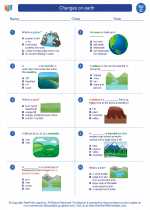Cotton
Cotton is a soft, fluffy staple fiber that grows in a boll around the seeds of the cotton plant (Gossypium sp.), a shrub native to tropical and subtropical regions around the world. It is one of the most widely used natural fibers in textile production.
Characteristics of Cotton
- Natural Fiber: Cotton is a natural fiber obtained from the cotton plant.
- Softness: It is known for its soft and comfortable feel, making it a popular choice for clothing.
- Breathability: Cotton fabric is breathable and absorbs moisture, making it suitable for warm weather.
- Versatility: It can be woven or knitted into various types of fabrics, including denim, terrycloth, and corduroy.
- Durability: Cotton fibers are strong and durable, allowing for long-lasting products.
Uses of Cotton
Cotton is used in a wide range of products, including:
- Apparel: T-shirts, jeans, dresses, and other clothing items
- Home Textiles: Bedding, towels, and curtains
- Medical Supplies: Bandages and swabs
- Industrial Products: Canvas and tire cord
Cultivation and Harvesting
Cotton is typically grown in warm climates with adequate rainfall. The process of cotton cultivation involves planting, watering, and protecting the plants from pests. Once the cotton bolls have matured, they are harvested and the fibers are separated from the seeds through a process called ginning.
Environmental Impact
Cotton cultivation can have environmental implications, including water usage and pesticide use. However, sustainable practices such as organic cotton farming and water-efficient irrigation methods are being adopted to minimize the impact on the environment.
Study Guide
- What is the botanical name of the cotton plant?
- Describe the characteristics of cotton as a natural fiber.
- List three uses of cotton in everyday products.
- Explain the process of cotton cultivation and harvesting.
- Discuss the environmental impact of cotton cultivation and the measures taken to address it.
◂Science Worksheets and Study Guides Third Grade. Changes on earth

 Activity Lesson
Activity Lesson
 Worksheet/Answer key
Worksheet/Answer key
 Worksheet/Answer key
Worksheet/Answer key
 Worksheet/Answer key
Worksheet/Answer key
 Worksheet/Answer key
Worksheet/Answer key
 Vocabulary/Answer key
Vocabulary/Answer key
 Vocabulary/Answer key
Vocabulary/Answer key
 Vocabulary/Answer key
Vocabulary/Answer key
